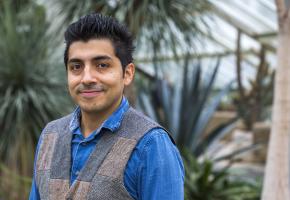“We have turned a new page in Colombia’s history,” said Rafael Martínez, the mayor of coastal city Santa Marta. A participant in the Bogotá street celebration said, “This is an exciting day, I’m 45, my son is 26, both of us grew up in a country at war and there is a peace agreement being signed, which means my grandchildren will grow up in a different country”.
Women’s group Ruta Pacífica announced, “We congratulate the parties: by means of dialogue and persistence, they have got further than hatred, opposition and resentment; they have said Yes to Peace and to the hope of thousands of Colombians.”
Four years is not a long time for a peace negotiation compared with other peace processes in the world, let alone after a conflict which lasted half a century. But for Colombians it has felt very long and drawn-out, not least because the Santos-FARC negotiations have taken place in the midst of ongoing armed conflict and a continuing, albeit diminishing toll of casualties. On June 23, however, the process really entered the final stretch, and many Colombians everywhere are jubilant.
The ‘End of the Conflict Agreement,’ as it is called, which has been heralded by national and international press around the world, corresponds to the two remaining points on the six-point negotiation agenda; ‘Ending the Armed Conflict’ and ‘Referendum, Implementation and Verification’. The other four points, previously agreed, are: ‘Comprehensive Agricultural Development Policy’, ‘Political Participation’, ‘Solution to the Problem of Illicit Drugs’ and ‘Victims’. The different agreements are comprehensive and inter-dependent, and the one on ending the armed conflict refers back at many points to the other agreements and emphasises complementarity, most notably on the issue of victims and transitional justice.
For this historical announcement, President Santos travelled to Havana to shake the hand of FARC commander Timochenko. They were joined by UN Secretary General, Ban Ki Moon, the Presidents of the UN Security Council and General Assembly, the General Secretary of the Community of Latin American and Caribbean States (CELAC), and the Presidents of Cuba, Chile, and Venezuela.
President Santos in his speech said that “Colombia has been used to living in conflict. We don’t even have memories of what it means to live in peace. We have become accustomed to the horror of war; it became part of our daily lives. […] Now, peace is possible! Finally it is possible! So now let us go and build it!” FARC commander Timochenko emphasised that the army, who has been their “adversaries”, would now become their “allies”, “for the good of Colombia”. He said that peace-building would not be easy, and called on Colombian youth “to build the new country […] and defend peace and reconciliation”.
The Definitive Bilateral Ceasefire and Decommissioning of Weapons
Both sides committed to building a new society in which weapons will no longer be used to do politics. Instead, democracy and civilised debate should guide the emergence of a new political culture in Colombia. The agreement establishes a period of six months to complete the implementation and details the different stages which should follow after the signing of the final agreement. A Monitoring and Verification Mechanism will accompany all the stages, made up of members of the Government and FARC and unarmed observers from the United Nations, mostly chosen from countries of the Community of Latin American and Caribbean States (CELAC).

The process of demobilisation of FARC will occur in different stages. During the six-month period the ex-fighters will be concentrated in ‘Transitory Settlement Zones of Normalisation’ (‘Zones’), of which there will be 23 throughout the country, as well as 8 smaller camps. The day after the signing of the final agreement, the Colombian Armed Forces will move its troops into position to facilitate the arrival of FARC fighters into these Zones, and from day five the FARC troops will arrive at their new, temporary homes. Once there, they will not be allowed to leave unless they are un-uniformed and unarmed, and civilians will not be allowed to enter the Zones. Whilst in the Zones, FARC and the Government will agree on various types of training and capacity-building that will prepare the ex-combatants for re-entry into civilian life, including basic primary and secondary education, and the issuing of national identity cards.
Local civilian authorities present in the Zones will continue their normal work; and FARC will not be allowed to engage in politics while there. Government Armed Forces will not be able to enter the Zones unless there is a situation of public order that merits their intervention, for which they will have to inform the Monitoring and Verification Mechanism. Around each Zone there will be a Security Belt 1km wide, within which the Monitoring and Verification Mechanism will operate.
Decommissioning of arms will also be carried out in stages, involving registration, identification, monitoring, verification of ownership, collection, storage, and removal to where they can be received by the United Nations. The final destination of FARC’s weapons will be the construction of three monuments. FARC combatants will bring their arms with them to the Zones, and these will then be collected and stored in special containers, over three phases: by the third month, 30% of the arms will be in storage; by the fourth month another 30% and by fifth month the remaining 40%. Unstable munitions will be destroyed on arrival at the Zones. Each Zone will have one storage facility and this will be under permanent observation by the Monitoring and Verification Mechanism, and the UN will be in charge of the keys. The UN will receive the decommissioned arms by the end of the sixth month, the day when the ceasefire finishes and the decommissioning procedure is certified.
The Agreement on Security Guarantees and the Dismantling of the Inheritors of Paramilitarism
This agreement seeks to protect all the Colombian population from paramilitary groups and criminal organisations. Those to be protected include social movements, human rights defenders, opposition political parties, and the political party that will emerge from FARC following demobilisation. It also aims to develop a stronger policy against these groups to combat them, dismantle their structures and support networks, and, importantly, to contribute to the clarification of the phenomenon of paramilitarism in Colombia, complementing the Agreement on the Rights of Victims.
The Word of the Colombian People
From the beginning of the negotiations, the parties established that they needed to find a mechanism to ask Colombian people whether they support or not the final agreement. This goes beyond seeking political legitimacy for the final accords. It is a key step for bringing Colombian civil society together to recognize and face up to the challenges of implementing the agreements. Throughout the negotiations the parties envisaged two very different ways to consult Colombians. The Santos Government wanted a referendum and the FARC a National Constitutional Assembly (NCA). This created an impasse, but the text of the new agreement now makes it clear that both parties will accept the final word of the Constitutional Court, which is currently analysing a draft law to determine the mechanism of participation to validate the peace accords.

Eager crowds in Plaza Bolivar, Bogotá, greet the signing
However, the plebiscite is a risky procedure. In recent weeks, ex-President Uribe and his political party Centro Democrático have been spearheading a ‘No More’ campaign, collecting signatures against the government, against the peace process, playing on and strengthening an emotional narrative in which FARC are depicted as a narco-terrorist group, in alliance with whom the Santos administration is manipulating the country towards ‘castro-chavismo’ and ‘communism’. The campaign seizes on any opportunity to turn a comment by the Santos Administration into a tool for polarisation. A ‘No’ vote in a plebiscite, not impossible in the current climate, could destroy the national and international legitimacy built up by the peace process, and lead the country back to the brink of war.
A New Beginning
After 60 years of war, the vast majority of Colombians have never known their country in time of peace. Most people know that the signing of the final agreement, expected in July, will only be the beginning, and that all sectors of society will have to work together to build a new culture of tolerance, rights and non-violence. It will not be easy, but it will be the beginning of a new era.
The signing of the recent agreement does not mean the ceasefire begins immediately. It begins with the signing of the final agreement. It does, however, look extremely hopeful that the silencing of arms in the longest-running war in the Western hemisphere is imminent, and this hopefulness was reflected in Colombians of all walks of life taking to the streets and celebrating this historic announcement, throughout the country.
For his part, ex-President Uribe made it clear that he will step up his opposition to the peace agreement. Within hours of the announcement, he made a public statement titled ‘Wounded Peace’, in which he claimed that the government is elevating the FARC to para-state, argued that it was a travesty that many FARC members would not face jail time, and accusing Santos of behaving like a dictator and negotiating the democratic model with terrorists. He continues to call for ‘civilian resistance’ against the Santos administration and its peace process.
To counteract this, civil society is asking Uribe to carry out a constructive opposition campaign that focuses on the Havana Agreements and not on personal attacks, lies and the promotion of hatred, because this can only be the seed of new waves of civic violence.
In the United Kingdom, we have just discovered how powerful a ‘No’ campaign can be. It is easy to to unite disempowered people in resentment, hatred, and fear of others; much less easy to to unite them in hopefulness and motivation to work together, despite and across political and personal differences. This, however, against all odds, is what is happening in Colombia at this moment, as enthusiasm spreads. Colombia could have much to offer to the UK and the world about the importance of optimism, hope and jubilation for democratic and constructive political processes, renouncing facile populism and recognising complexity and plurality. The country is moving into the final stretch of the peace process; it’s not there yet and there are many obstacles, but if they get there, it will mark the start of a new stage of peace-building, as the implementation of the accords begins.
Gwen Burnyeat is a British anthropologist and writer based in Colombia and the UK. She has been lecturer in Political Anthropology in the Universidad Nacional de Colombia, where she also did a Masters degree in Anthropology as a Leverhulme Trust Study-Abroad Scholar and wrote her thesis on the Peace Community of San José de Apartadó. Before that she studied Literature at the Universities of Leeds and Cambridge.
Andrei Gómez-Suárez is lecturer in transitional justice and peace at the University of Los Andes, Colombia, associate researcher at Sussex University, and member of Rodeemos el Diálogo.
More articles by L:AB experts at www.lab.org
All photos: Rodeemos El Diálogo

















